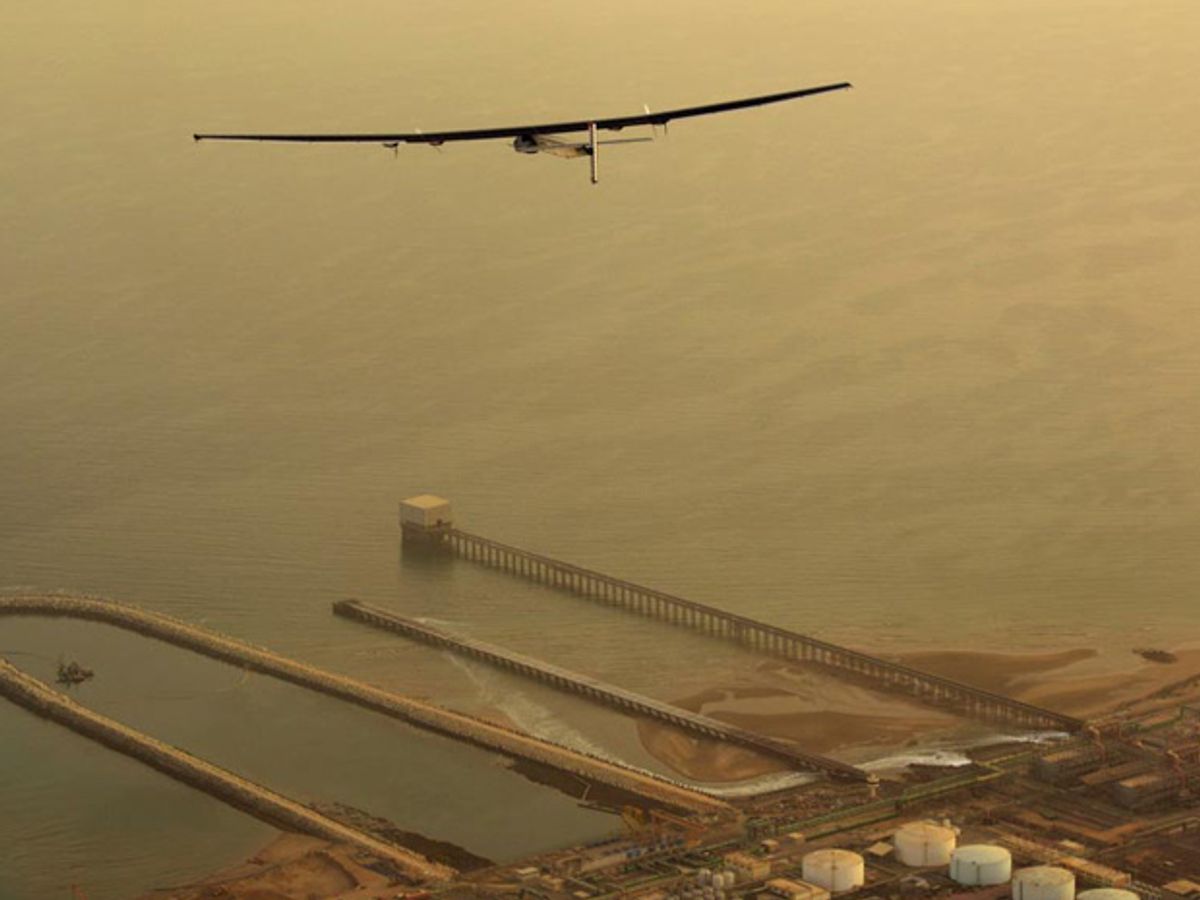A solar plane designed to fly around the world without a drop of fuel has completed the first sea crossing of its 32,000-kilometer journey. The Solar Impulse 2 successfully crossed the Arabian Sea to reach India during the second leg of its round-the-world odyssey.
By relying upon more than 17,000 solar cells covering its wings to provide energy to its bank of batteries and four electric motors, the solar plane can stay airborne virtually forever. (The pilot, of course, cannot.) Sunlight gives Solar Impulse 2 the chance to collect 340 kilowatt-hours of energy per day and recharge its lithium polymer batteries. That allows the solar plane to fly through the night without running out of energy; it climbs to 8,500 meters during the day and descends to just 1,500 meters at night to conserve energy.
On average, the Solar Impulse 2 uses just as much power as a small motorbike over a 24-hour period. It typically flies at speeds between 36 kilometers per hour and 140 kilometers per hour.
The solar plane also relies upon a lightweight framework design to stay airborne. Its carbon fiber frame has a 72-meter wingspan larger than that of a Boeing 747-8I jumbo jet, but with a 2,300-kilogram weight equivalent to that of a car.
The plane completed the first leg of its trip from Abu Dhabi to Muscat, Oman on 9 March, before taking off from Muscat early on 10 March and flying across the Arabian Sea to reach Ahmedabad, India.
“It’s not only about the airplane, it’s also about what it means in terms of a better future and quality of life,” said Bertrand Piccard, pilot of Solar Impulse 2, shortly before landing in India.
The second leg of the journey from Muscat to Ahmedabad may have already set a new solar aviation record for predeclared distance. But the Solar Impulse 2 team hopes to do more than just break flying records. The effort also aims to focus the spotlight on new developments in renewable energy and clean technologies.
The human endurance required to fly a solar plane around the world cannot be underestimated. Pilots Bertrand Piccard and André Borschberg plan to switch off on flying the single-seater aircraft with each leg of the journey. But their biggest challenge will come from flying five or six days and nights in a row to cross the Pacific and Atlantic oceans.
For those “long haul” flights, the pilots can make use of the solar plane’s reclining seat that allows for quick naps and also conveniently converts into a toilet. Self-hypnosis and meditation techniques will also help the pilots maintain their concentration.
The Solar Impulse 2 widget allows anyone with an online connection to track the mission’s progress live as it flies across the world over the next several months.
Jeremy Hsu has been working as a science and technology journalist in New York City since 2008. He has written on subjects as diverse as supercomputing and wearable electronics for IEEE Spectrum. When he’s not trying to wrap his head around the latest quantum computing news for Spectrum, he also contributes to a variety of publications such as Scientific American, Discover, Popular Science, and others. He is a graduate of New York University’s Science, Health & Environmental Reporting Program.



